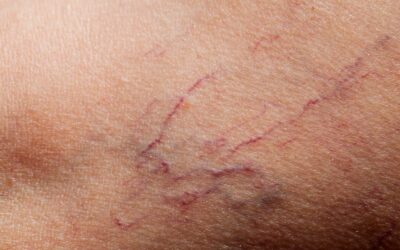You have options in dermal and facial fillers. Restylane and Juvederm are two of the best choices you’ll undoubtedly encounter in your research. As you read, you’ll tend to find they are alike in many ways. They treat many of the same issues and the same areas. So, what are their differences? Could it be as simple as which cola you like better, or is there more to it?
This post will discuss some of the differences and similarities between two of the world’s most popular dermal fillers – Restylane and Juvederm. in the following content; we go over their formulas, textures, what they treat, their results, and more. Read further for all of this information!
Formula
Most fillers, including Restylane and Juvederm, have hyaluronic acid’s same active ingredient. Hyaluronic Acid (HA) is a carbohydrate that occurs naturally in all living things. Present in all living things. It has a unique propensity for absorbing and retaining water, making it robust for dermal fillers aiming to plump areas of the skin and face. Since it is a naturally occurring substance, the risk of allergic reaction in either of these products is relatively low. Of course, however, you need to talk this over with your doctor and review your medical history to ensure no issues arise.
Texture
The main difference between Juvederm and Restylane is their texture. Restylane is granular, while Juvederm is smooth and silky. Their texture makes them suited to different uses.
Smooth, silky Juvederm is suitable for addressing finer details like lines and wrinkles. It quickly spreads throughout the injection area. The thicker, more cohesive Restylane formula is ideal for sticking in place and staying right where it is injected, making it optimal for volumizing sunken facial areas. The thicker consistency also makes it moldable, allowing injectors to sculpt it beautifully into shapes and contours that the patient desires.
What do they treat?
Juvederm is suitable for treating lines and wrinkles of various severities. There are different formulas within the Juvederm line used to treat specialized issues. We will go into more depth on all of these in an upcoming post!
Restylane is used to address many of the same facial areas but is more effective in treating lips, cheeks, and locations around the nose. Restylane is also great for treating recessed regions in the hands. Restylane also has many different sub-categories within the family to treat specialized areas and issues.
How long do the results last?
There are many variables in how long a particular dermal filler lasts for any patient. The filler itself is a factor, but so is the injector you choose, the patient’s metabolism rate, and the treatment area. Most clinical trials put their lasting effects in the 9-12 months range for most patients.
Over time, the natural hyaluronic acid will biodegrade, making results non-permanent. The body absorbs it, eventually returning the body to its original state.
Patients who want to maintain the look have their fillers refreshed once they start to fade away.
Pain
When dealing with a skilled injector, there is virtually no pain. Some minimal discomfort can be expected, like with any other needle. You can use topical numbing cream if you feel the need. Just ask your doctor. Juvederm and Restylane are both minimally-invasive, using an ultra-fine needle to inject. Many formulas also include lidocaine, which effectively numbs skin during injections to minimize discomfort.
How long does treatment take?
Some patients come to get fillers on their lunch break. Most filler patients are in and out in 45 minutes or less. Depending on the extent of treatment, this can be more or less. A more accurate estimate can be given based on your specific situation when speaking to your doctor.
Recovery and Downtime
Restylane and Juvederm are both safe, minimally-invasive injectables that require no downtime. Patients go right back to their day once the injections are done. Post-procedure swelling can be minimized by not working out or doing any intense physical activity for 24 hours while the fillers settle in.
The only potential side effects are minor and go away on their own in most cases. These include swelling, redness, and some pain around the injection site. Serious side effects are exceedingly rare but do exist; they include allergic reactions, skin discoloration, infection, scarring, and numbness.
Cost
The pricing of Restylane and Juvederm are comparable. Dermal filler pricing is dictated by your area, how much you need, and who you are using as an injector, among other factors. Every patient’s needs are different. Cost is always discussed and approved before any filler is injected.
Juvederm vs. Restylane: Which is the better choice?
You may have come here to learn which is better, but the answer is, “it depends.” Juvederm and Restylane are both great for what they’re great at. The decision in any situation depends on which area you are treating, how you want it treated, the changes you want to see, and you as the patient.
Juvederm and Restylane in Columbus, OH
If you’d like to learn more or book a consult with our aesthetics team in Columbus, OH, get in touch with us today. We offer a variety of dermal filler and neurotoxin options that help our patients to achieve beautiful, natural-looking results.



